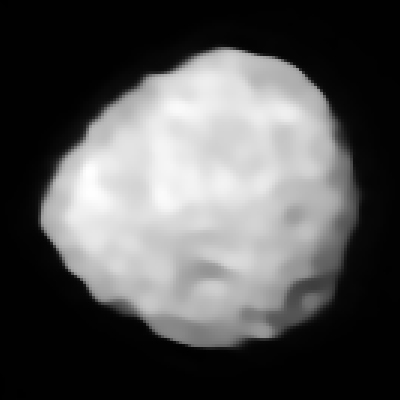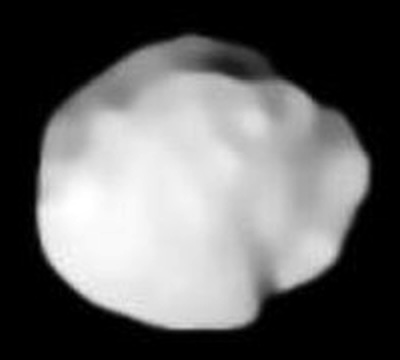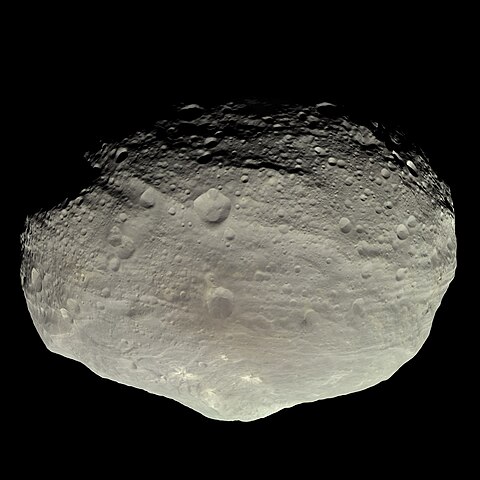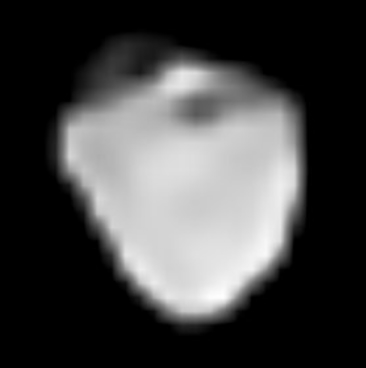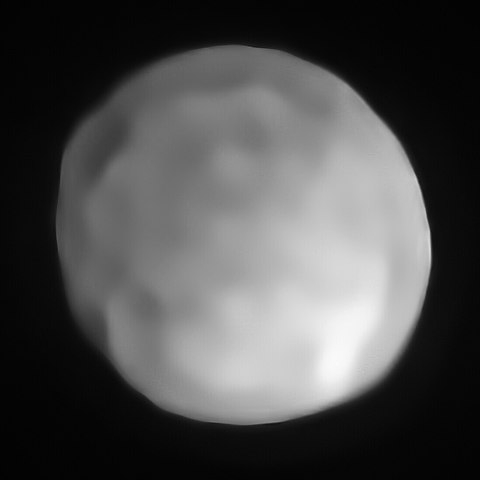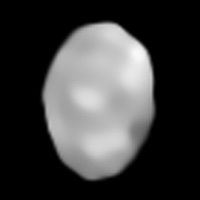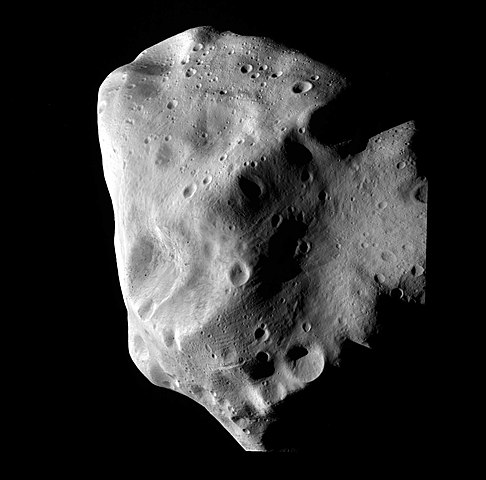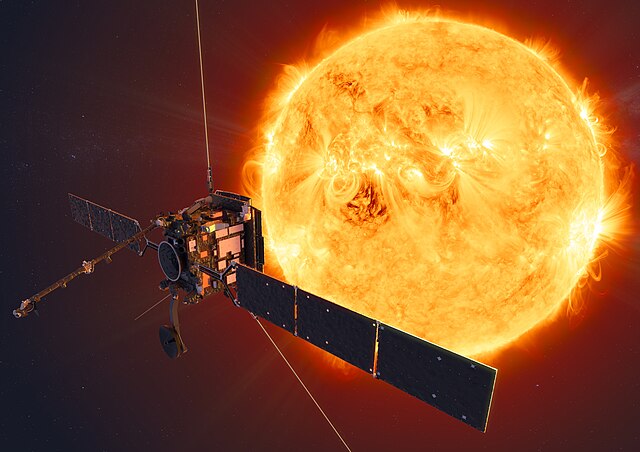1 day / second
0.5 AU
7 Iris
Asteroid
A large, bright main-belt asteroid measuring about 200 kilometers across with an unusually reflective surface composed primarily of silicate minerals and metals.
Key Facts
orbital regime | Asteroid Belt |
learn more | Wikipedia |
mass | 1.3500e+19 kg |
radius | 99.915 km |
hill radius | 36,091 km |
semi-major axis | 2.386 AU |
eccentricity | 0.23 |
inclination | 5.519º |
longitude of the ascending node | 259.499º |
argument of periapsis | 145.52º |
orbital period | 3.686 years |
surface gravity | 0.009 g |
discovery date | August 13, 1847 |
discovered by | John Russell Hind at Bishop Observatory |
name origins | Named after Iris, the Greek goddess of the rainbow |
dimensions | 199.83 km in diameter |
albedo | 0.277 |
material composition | S-type asteroid (silicaceous) |
density | 3.18 g/cm³ |
